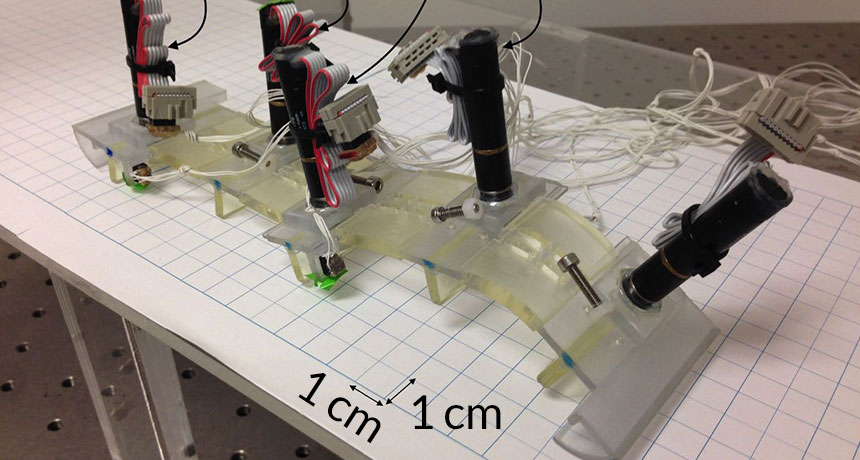Caterpillar robot uses squishy, 3-D printed legs to inch and crawl

A robot caterpillar can use squishy legs to sense the world.
Roboticist Takuya Umedachi and colleagues designed the robot after studying real-life caterpillars. These insects can “bend, wrinkle, buckle, twist, droop, and creep” their way through the environment, and they do it “without massively complex brains,” the researchers write December 7 in Royal Society Open Science.
To mimic a caterpillar, Umedachi’s team built a version that included motors, pulleys and wire. It’s 23 centimeters long — about the length of a tissue box — with four contracting segments, and those squishy legs. Sensors detect when the legs bend. That’s a cue for the robot to crawl, one segment contracting after another in a wave.
But when Umedachi covered the middle two legs with tape, they no longer had enough purchase to push off the ground — they didn’t bend. “It’s slippery, like walking on ice,” says Umedachi, of the University of Tokyo. That’s enough info for the robot to change its gait — without using a lot of “brain” power. When those middle legs stay straight, the robot switches to a new caterpillar-like movement: like an inchworm, back leg scooching to front, and then front leg stretching forward.
A pliable body lets robots sense and interact with the environment, Umedachi says. And it could give machines yet another way to become more aware of themselves — and their surroundings.